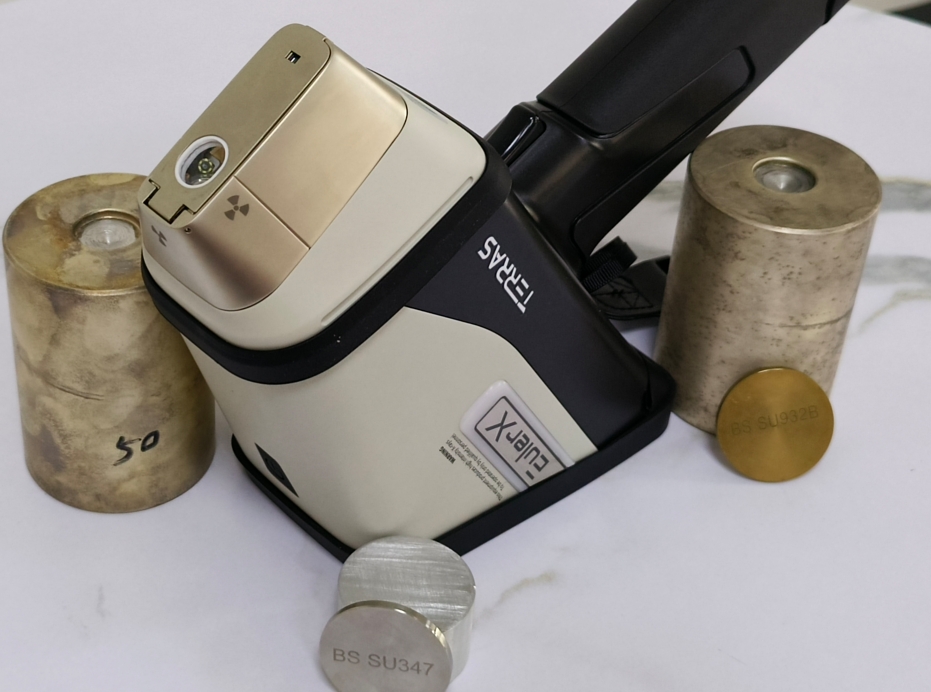
Alloy
A high-tech enterprise focusing on the development and application of X-ray technology products, committed to becoming a leading supplier of X-ray industrial testing solutions.
Advancements in Portable Spectrometers for Metal Analysis: What’s New?
In recent years, the field of portable spectrometry has witnessed remarkable advancements, particularly in metal analysis. These handheld devices, once limited by size and performance constraints, have evolved to offer precision and versatility that rival their benchtop counterparts. This article explores the latest innovations in portable spectrometers, shedding light on their new capabilities and the impact they are having across various industries.
Miniaturization and Portability
One of the most significant advancements in portable spectrometers is the reduction in size and weight. Modern devices are incredibly compact, allowing for easy transport and use in the field. This miniaturization has been achieved without compromising the accuracy and reliability of the measurements. Cutting-edge engineering and material science have played a crucial role in developing components that are both small and highly effective.

Enhanced Sensitivity and Accuracy
Recent developments have significantly improved the sensitivity and accuracy of portable spectrometers. Innovations in detector technology, such as the integration of advanced CCD (Charge-Coupled Device) and CMOS (Complementary Metal-Oxide-Semiconductor) sensors, have enhanced the devices’ ability to detect and quantify even trace amounts of metals. These sensors offer higher resolution and faster response times, making on-site metal analysis more precise than ever before.
Broader Spectral Range
The spectral range of portable spectrometers has also expanded, allowing for the analysis of a wider variety of metals and alloys. This broader range is particularly beneficial for applications in recycling, mining, and manufacturing, where diverse materials need to be identified and analyzed quickly. With the ability to cover a more extensive part of the electromagnetic spectrum, these devices can now detect and differentiate between more elements and compounds.
User-Friendly Interfaces and Software
Advancements in software and user interfaces have made portable spectrometers more accessible to non-experts. Modern devices often feature intuitive touchscreens, easy-to-navigate menus, and real-time data processing. The integration of sophisticated software algorithms enables automated calibration, data analysis, and reporting, reducing the need for specialized training and minimizing human error.
Connectivity and Data Integration
The ability to connect portable spectrometers to other devices and systems has transformed how data is collected and used. Many new models come equipped with Bluetooth, Wi-Fi, and USB connectivity, allowing for seamless data transfer to computers, smartphones, and cloud-based systems. This connectivity facilitates real-time data sharing and integration with larger data management systems, enhancing collaborative efforts and decision-making processes.
Robustness and Durability
Fieldwork often subjects portable spectrometers to harsh conditions. Recent models are designed to withstand extreme environments, including high temperatures, humidity, and physical shocks. Advances in ruggedized housing and protective features ensure that these devices remain functional and accurate, even in the most challenging settings. This durability extends the lifespan of the equipment and ensures reliable performance in diverse conditions.
Applications Across Industries
The advancements in portable spectrometers have expanded their applications across numerous industries:
Mining and Geology: Enhanced accuracy and spectral range facilitate the identification and quantification of minerals and ores directly at the mining site.
The EulerX 500 series from Terra Scientific marks a significant advancement in handheld XRF mining analyzers, tailored for a variety of analytical tasks within the mining sector. This device enables on-site analysis of ore samples with little to no sample preparation, shifting the assay timeline from days to mere minutes. Utilizing the fundamental parameters method, the EulerX 500 series can analyze ore samples accurately without the need for calibration standards.
In the mining environment, it facilitates straightforward ore grade control and supports swift decision-making. The EulerX 500 makes analyzing ore concentrates during the enrichment process straightforward, capable of accurately measuring both primary and trace elements through the fundamental parameters method.
Environmental Monitoring: Portable spectrometers are essential for detecting and analyzing contaminants in soil, water, and air, contributing to environmental protection efforts.
Recycling and Waste Management: These devices enable the sorting and identification of metals in recycling processes, improving efficiency and material recovery rates.
Manufacturing and Quality Control: Portable spectrometers ensure the integrity and composition of raw materials and finished products, maintaining high standards in production.

Future Prospects
The future of portable spectrometry looks promising, with ongoing research and development aimed at further enhancing performance and expanding capabilities. Potential advancements include the integration of artificial intelligence for smarter data analysis, the development of even more compact and energy-efficient models, and the incorporation of advanced materials for improved sensor performance.
Conclusion
The advancements in portable spectrometers for metal analysis mark a significant leap forward in technology and application. These devices are now more precise, versatile, and user-friendly than ever, making them indispensable tools in various fields. As innovation continues, we can expect even greater capabilities and new applications, further solidifying the role of portable spectrometers in modern industry and research.
Join Us
Subscribe to our email list for updates & promotions.



